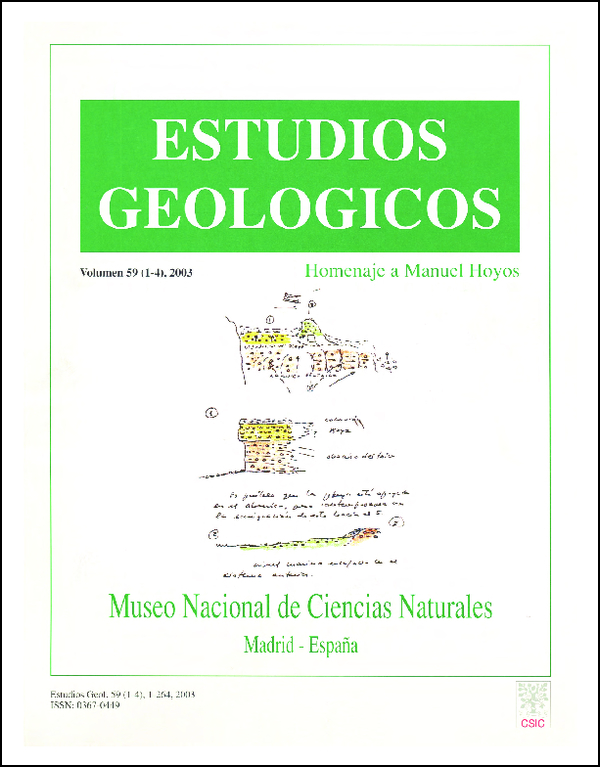Features of deep cave sediments: their influence on fossil preservation
DOI:
https://doi.org/10.3989/egeol.03591-498Keywords:
Taphonomy, karst sedimentology, inorganic geochemistry, organic geochemistry, temperature variation, dentine, collagen, aspartic acid, racemizationAbstract
We analyse how physical and chemical deep-cave sediment features preserve the morphological and geochemical characteristics of paleontological materials. Detrital sediment chemistry and clast size are fundamental because they provide a soft, impervious and plastic environment in which fossil remains are transported with minimal erosion. Sediment mineralogy provides a carbonate- and phosphate-buffered environment in which molecules of biological origin hydrolyze slower than in open-air environments or even at cave entrance sites. Because permafrost did not develop in the Iberian Peninsula (at least at the altitudes of inhabited caves), sediment desiccation never took place. In addition, sediment -pores were not aerated, which protected fossil remains from air (oxygen)-linked weathering. The annual-temperature variation inside sediment was negligible, which contributed to amino acid racemization dating. Collagen amino acid and amino acid racemization analysis of cave bear and man samples from cave sediments dated from different Oxygen Isotope Stages (4": Sidrón, Amutxate, Troskaeta, El Toll, Coro Tracito, Ekain, Lezetxiki, La Pasada, Eirós; 5": Reguerillo and Arrikrutz; 6"-7": Sima de los Huesos) demonstrate that important amounts of almost intact collagen still remain in teeth dentine. Fossil DNA search seems to be very promising.
Downloads
Downloads
Published
How to Cite
Issue
Section
License
Copyright (c) 2003 Consejo Superior de Investigaciones Científicas (CSIC)

This work is licensed under a Creative Commons Attribution 4.0 International License.
© CSIC. Manuscripts published in both the print and online versions of this journal are the property of the Consejo Superior de Investigaciones Científicas, and quoting this source is a requirement for any partial or full reproduction.
All contents of this electronic edition, except where otherwise noted, are distributed under a Creative Commons Attribution 4.0 International (CC BY 4.0) licence. You may read the basic information and the legal text of the licence. The indication of the CC BY 4.0 licence must be expressly stated in this way when necessary.
Self-archiving in repositories, personal webpages or similar, of any version other than the final version of the work produced by the publisher, is not allowed.















